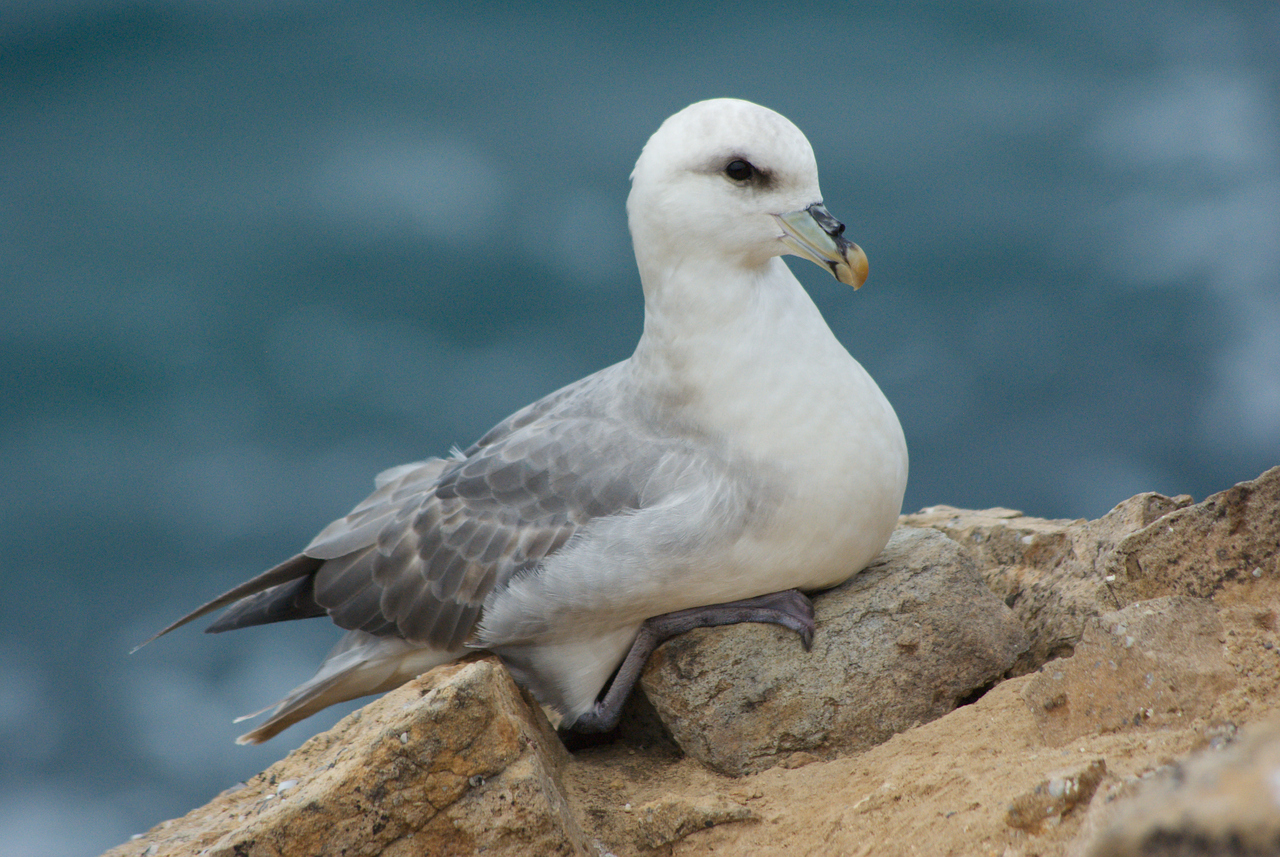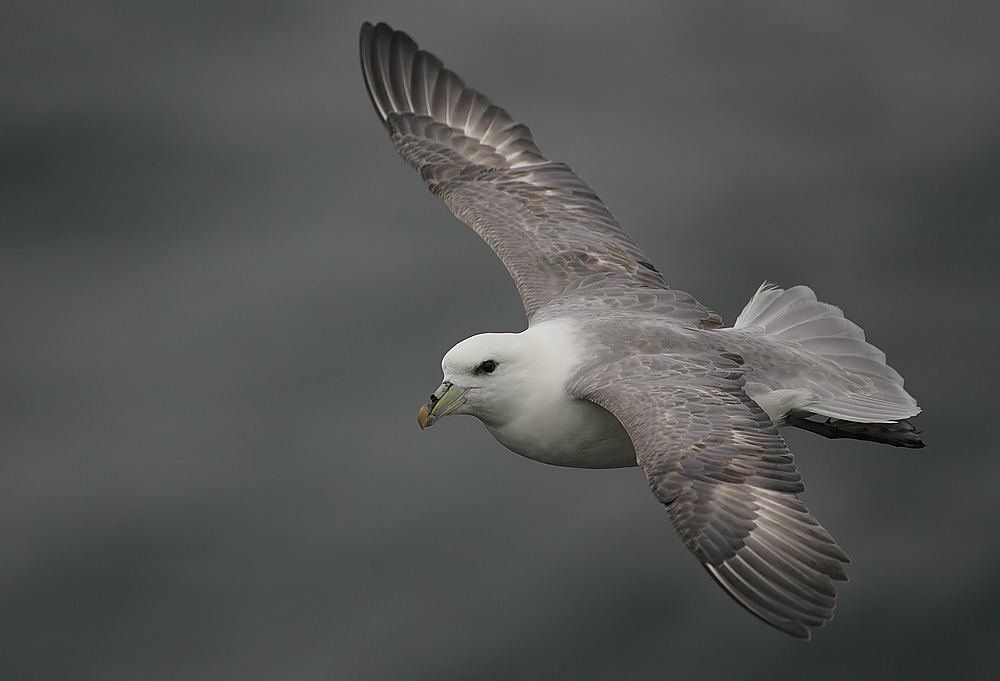
Fulmarus glacialis
TAXONOMY
Procellaria glacialis Linnaeus, 1761, within the Arctic Circle
(Spitsbergen).
OTHER COMMON NAMES
English: Arctic fulmar; French: Fulmar borйal; German: Eissturmvogel;
Spanish: Fulmar Boreal.
PHYSICAL CHARACTERISTICS
With a wingspan of 40.2–44.1 in (102–112 cm), white head, and
gray upper body, northern fulmars resemble gulls, but their
wings are broader and the neck is thicker. Lighter morphs are
more common in Atlantic, darker morphs in Pacific.
DISTRIBUTION
Northern Atlantic and Pacific oceans, has spread southward
over much of the Atlantic Ocean. Winters farther south.
HABITAT
Marine, especially colder waters of the Northern Hemisphere.
BEHAVIOR
More aggressive in vomiting habits than other procellariids.
Stiff wings held out straight from body help to distinguish
them from gulls.
FEEDING ECOLOGY AND DIET
Feed on fish, squid, plankton, and fishing refuse. Feeds in flocks,
frequently behind fishing boats. Will scavenge on carrion.
REPRODUCTIVE BIOLOGY
Breeding season begins in May. The single white egg is incubated
47–53 days; the white to dark gray chick is brooded for 2
weeks; fledging after 46–53 days. Nests colonially on cliff ledges
and on level ground, and has expanded to buildings and rooftops.
CONSERVATION STATUS
Not threatened. One of few seabirds to increase in numbers
and range since 1800. Expansion may be due to food from
fishing ship discards or to changing oceanographic conditions.
The dependence on fishing ships presents an interesting conservation
problem. If ships clean up their refuse, then fulmars
may be pushed to feed elsewhere, potentially on smaller birds.
SIGNIFICANCE TO HUMANS
Once hunted for food. Now may be anthropophilic, following
fishing ships for food.
Other popular Animals
Photo Gallery of - Northern fulmar




 Animalia Life
Animalia Life